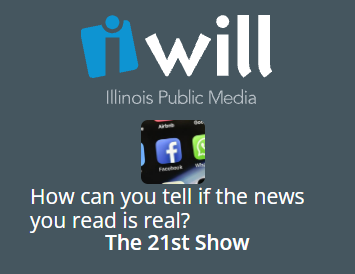
Head of education team answers the question, ‘How can you tell if the news you read is real?’
As part of Illinois Public Media’s special week of coverage, “Who’s in charge of the news,” Peter Adams, NLP’s senior vice president of education, helped to empower listeners of The 21st Show with ways to distinguish fact from fiction in the news.
The segment, How can you tell if the news you read is real?, featured Adams along with Stephanie Craft, head of the journalism department at the University of Illinois at Urbana-Champaign, and Michael Spikes, a Ph.D. student in Learning Sciences at Northwestern University.
When asked how to know if a post, meme, or GIF on social media was fact-based and okay to share, Adams said, “When it comes to sharing posts about civic matters, like politics or social issues, it’s best to make sure that what you’re sharing is accurate. If there’s a link to another source involved, make sure it’s a standards-based source that has processes of verification in place and strives to be as fair and accurate as possible in the information it produces. I would add that lots of people, including people who we love and generally trust in our lives, share or reshare false claims. Sometimes these are just statements, what we call, ‘sheer assertions,’ with no evidence at all. But sometimes these kinds of baseless claims can take other forms. So, a photo without attribution or context, or a screenshot of a headline with no link, or a meme.”
To listen in full, click here. (Adams is quoted at the 7:40 and 16:00 minute marks.)